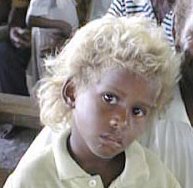Today we are gonna talk about how and why we get different hair colors.
I'm sure you all have heard of the word melanin. It is the pigment that gives skin and hair its natural color. Those with darker skin have higher amounts of melanin than those with fairer skin. This pigmentary substance, melanin, is produced by cells called melanocytes which are located in the cells lining the hair matrix.
[These melanocytes are also found in the border between the epidermis and dermis (the basement membrane) where they produce melanin that gives skin its color.]
Ok, so back to hair- The melanocytes in the hair matrix are responsible for laying down pigment onto the newly formed hairs. So if you can imagine, as the matrix is producing a colorless hair strand, the melanocytes there quickly slash some melanin onto the hair strand to give it some color.
Now there are 2 types of melanin, and this is what makes ALL the difference:
1. EUmelanin- which is responsible for brown and black hair, and
2. PHAEOmelanin- for red, auburn and blond hair.
Grey and white hair is caused by low melanin production which is mostly due to aging.
GEEK ALERT!!!!
Interestingly, africans, indians and caucasians actually have the same number of melanocytes on their basement membranes. The difference lies in how the melanin is produced.
Now in actual fact these melanocytes don't just spit out the pigment like a blob of paint. We are human beings and so things are a bit more complex and organized. The melanin is usually contained in little packets called melanosomes and its these melanosomes that are 'secreted' from the melanocytes into neighboring 'normal' cells (keratinocytes) which travel up the epidermis and are eventually shed after we've caused them too much wear and tear with our designer clothes and body creams .
In caucasians, the melanosomes are lumped together forming this big blob and as they are transferred to these keratinocytes which travel upwards, the melanosomes break down hence containing less color by the time they reach the surface.
In darker skinned individuals, the melanosomes are not lumped into one big blob but are individual and larger, and so they travel up the epidermis without being broken down. Pretty cool, huh?
Now this is even cooler; melanosomes within keratinocytes of Asian skin are distributed as a combination of individual and clustered melanosomes with a proportion of 62.6% vs. 37.4%, respectively. This contrasts with dark and light skin keratinocytes where melanosomes are predominantly individual (88.9%) and clustered (84.5%), respectively [Br J Dermatol. 2003 Sep;149(3):498-505]
I'm so tempted to carry on with this topic, as I came across some pretty cool research whilst writing this post. To find out why albinos look the way they do and their melanosome distribution click here
I also found an article that discussed briefly why some australian aborigines, like this kid have blond hair.
That's all for now folks. Hope y'all learnt something new; I definitely did :)
xoxo
Miss Jay





I love it. That was very insightful.
ReplyDelete